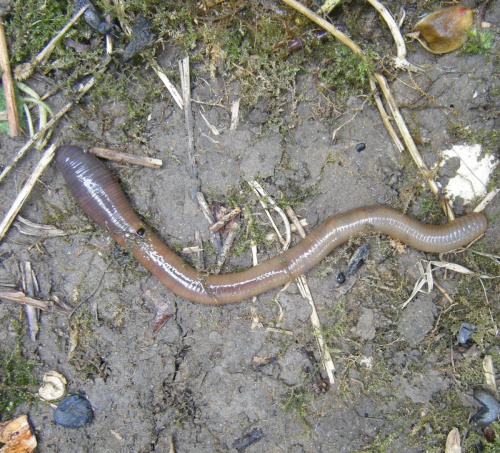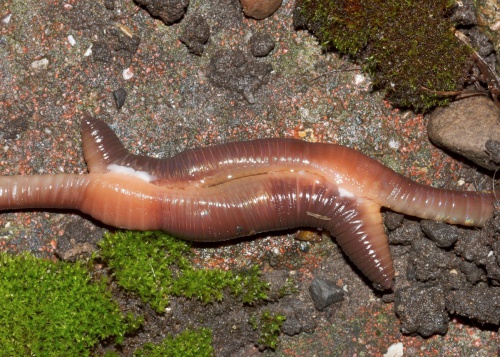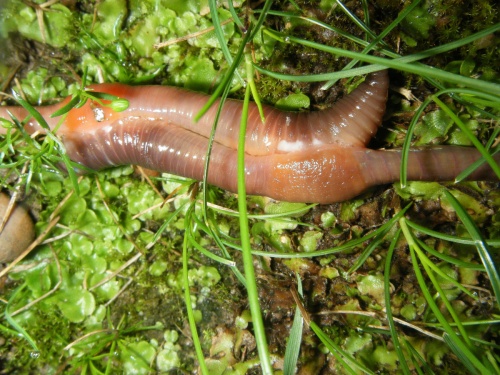Common Earthworm - Lumbricus terrestris
The Lob Worm is Britain's largest earthworm. The biggest individuals can be up to 35 cm in length when moving. Their colour is brownish to purplish red above, yellow-orange below, with one end a flat paddle shape.
They prefer undisturbed soil and are common in lawns.
All year round
They live in deep vertical burrows in the soil and can anchor themselves by broadening their tail to grip the sides of the burrow. Lob worms emerge at night to feed on fallen leaves and other decaying plant material. They can reach populations of 20 to 40 worms per square metre in an average garden lawn. They appear on the surface of lawns in wet weather to mate. Lying head to tail, this mating can last up to 4 hours.
Common and widespread throughout Britain, but badly under recorded.
Very common in Leicestershire and Rutland.
Leicestershire & Rutland Map
Enter a town or village to see local records
MAP KEY:
Yellow squares = NBN records (all known data)
Coloured circles = NatureSpot records: 2020+ | 2015-2019 | pre-2015
UK Map
Species profile
- Common names
- Lob, Common Earthworm, Dew Worm, Squirrel Tail, Twachel, Night Crawler (N. America)
- Species group:
- Worms
- Kingdom:
- Animalia
- Order:
- Crassiclitellata
- Family:
- Lumbricidae
- Records on NatureSpot:
- 6
- First record:
- 30/03/2009 (Nicholls, David)
- Last record:
- 14/03/2020 (Dejardin, Andrew)
Total records by month
% of records within its species group
10km squares with records
The latest images and records displayed below include those awaiting verification checks so we cannot guarantee that every identification is correct. Once accepted, the record displays a green tick.
In the Latest Records section, click on the header to sort A-Z, and again to sort Z-A. Use the header boxes to filter the list.







